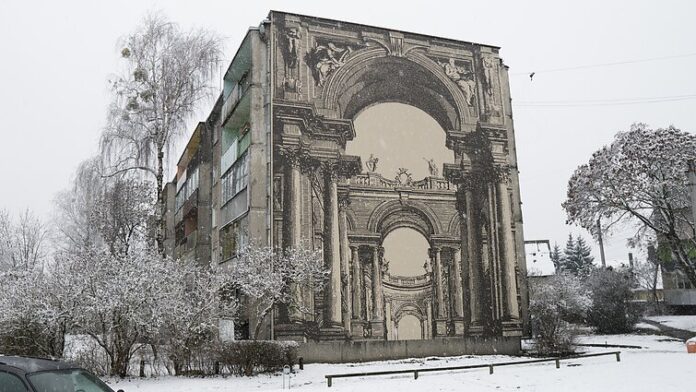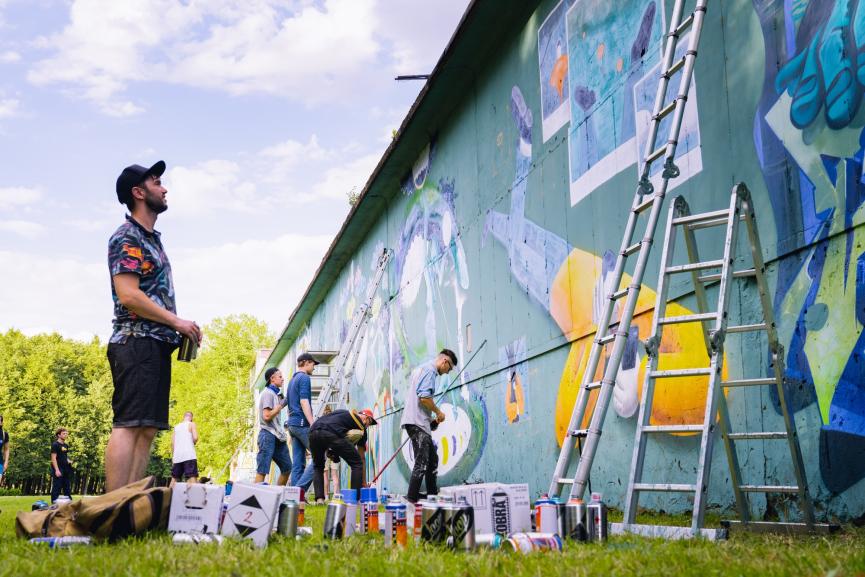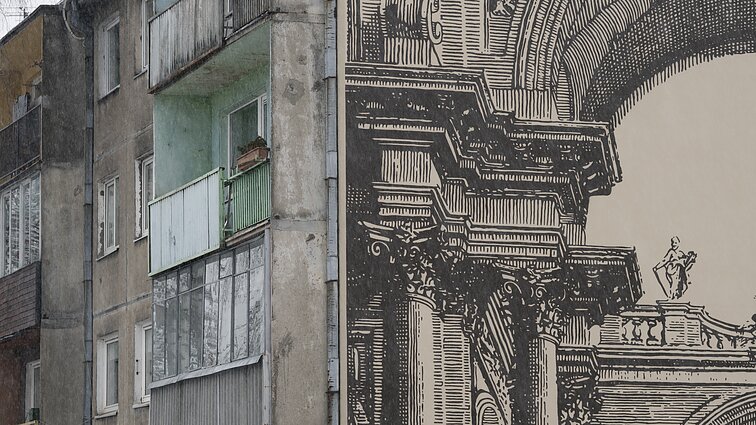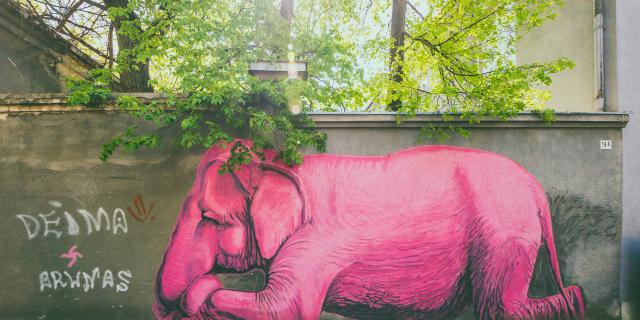
When did graffiti first arrive on the walls of Kaunas? It’s difficult to know, but during the years of Soviet occupation, some bold anonymous statements appeared in the city. After the restoration of independence, the sales of spray paint shot up and neither the police nor local government was able to curb the passion of graffiti artists. After losing its rebellious intent, street art has become a universally recognized phenomenon, which is not only visually attractive but adds value to Kaunas as a design city.

Living Walls is an ongoing project by Kaunas Municipality that aims to connect building owners with street artists. Some of the drawings end up on apartment blocks, others on abandoned factories, yet others on garages and fences. “We received a request from street artists to have more spaces where they could express their ideas, so we found two walls in Kaunas where artists could create legally and freely,” said Aušrinė Vaščėgaitė, manager of communication projects at the Kaunas Municipality Public Relations Department. One of these walls in Kalniečiai Park was decorated by a group of artists on July 18, 2020, during the Graffiti Jam event. Participants from Kaunas, Vilnius, Klaipėda, and Druskininkai started their work on a hot Saturday morning, adding finishing touches late in the evening. The space was brought to life for a new purpose, evoking positive emotions and sincere curiosity in Kaunas residents and guests of all ages. (Explore https://visit.kaunas.lt/en)
 Lately, a grey wall of an apartment block in the residential area of Vilijampolė in Kaunas has been enlivened with a painting of ancient architecture. According to the authors, it is a form of protest against the Soviet ideology of uniformity. The five-storey Soviet apartment block in Union Square in Kaunas now features an artwork called “The Vault” (Skliautas), standing in stark contrast with its surroundings. The wall is 15 metres high, and the total area of the mural covers almost 200 square metres. It was painted in seven days by the muralists of “Gyva grafika” (Live Graphics). The Kaunas Municipality first provided funding to insulate the wall so that when the apartment block is renovated in the future, the painting will remain intact.
Lately, a grey wall of an apartment block in the residential area of Vilijampolė in Kaunas has been enlivened with a painting of ancient architecture. According to the authors, it is a form of protest against the Soviet ideology of uniformity. The five-storey Soviet apartment block in Union Square in Kaunas now features an artwork called “The Vault” (Skliautas), standing in stark contrast with its surroundings. The wall is 15 metres high, and the total area of the mural covers almost 200 square metres. It was painted in seven days by the muralists of “Gyva grafika” (Live Graphics). The Kaunas Municipality first provided funding to insulate the wall so that when the apartment block is renovated in the future, the painting will remain intact.
“The idea was born while looking at vintage prints depicting ancient cities and their architecture. The spectacular, enchanting beauty inspired the desire to transfer at least a small part of it to the walls of Kaunas,” said street artist Timotiejus Norvila.
Union Square was called Komsomol (Communist Youth) Square in Soviet times. According to the artists, the new mural is a form of protest against the Soviet ideology of uniformity and brutalism. At the same time, “The Vault” symbolizes the importance of architecture for the city and its people. According to Norvila, the mural made him think about suppressed creativity in Lithuania during the Soviet occupation.

“Just like those grey apartment blocks, community living here was suppressed and intimidated. It may seem ridiculous, but the connection between the walls and us is very close. What if things were different? If we didn’t have to paint such murals? If we grew up surrounded by such architecture?” he said. “The Vault” is the fourth work curated by Norvila as part of the Living Walls programme and the third mural painted on a five-storey building in Vilijampolė.
The artist is convinced that a good painting does not compete with Soviet architecture but rather complements it by adding something new and beautiful.





























